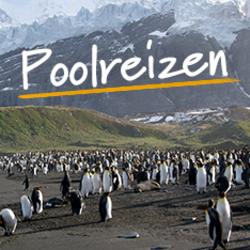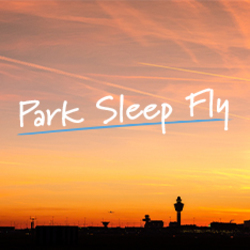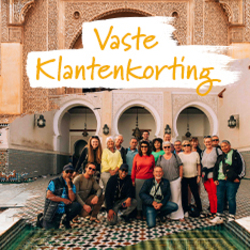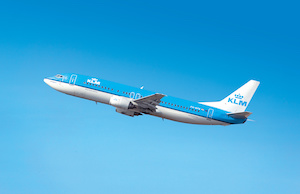-
1
Start Kathmandu.
Those on the group flight from London will arrive into Kathmandu in the evening and will be transferred to our hotel. Those not travelling with the group from London will meet us in the hotel. There will be a full trek briefing at the hotel tonight.
-
2
Scenic drive to Besisahar. Trek to Bhulebule.
We leave Kathmandu early in the morning and drive towards Pokhara. After leaving the Kathmandu Valley we follow the river to Mugling. We then continue to Besisahar where we begin our trek. From here we walk down to the river and cross to the east side to avoid the new road which is currently under construction. Our trail undulates above the river, continuing northwards up the Marsyangdi Valley with Himalchuli and Peak 29 dominating the horizon. We follow a quiet trail through rice paddies and villages for two hours until we meet the main trail at Bhulebule. Walk profile: 8km / 3hrs
-
3
Start the slow ascent of the Marsyangdi Valley to Jagat.
The trail continues up the east bank of the river to Ngaddi, where a large hydro project is being built. From here we begin a steady climb through scrub forest finally arriving at Lampatta, a Manangi village with Tibetan style prayer flags. A final short sharp ascent brings us to the village of Bahundanda, perched on a ridge. From the ridge we descend to the river at Syange where we once more cross the river. The trail then follows the river to Jagat (1,300m). Walk profile: 20km / 7.5hrs
-
4
Reach the village of Dharapani.
An undulating trail leads to Chyamje, after which we cross a suspension bridge and climb through oak forest. The trail then emerges into a level valley where 'Tal', the next village is situated at the foot of a grand waterfall (1,700m). Crossing the river a couple of times we reach the village of Dharapani at 1,943m. Walk profile: 20km / 6-7hrs
-
5
Steady climb through forest to Temang, then descend to Chame.
Beyond this village we continue our climb over a spur to Bagarchap, at 2,164m. The name of this village means 'butcher's place' and, although Buddhist, the people of this region do hunt animals. Continuing, we follow the trail through forest to Dhanagyu and climb up to Temang, where we have lunch with magnificent views of Manaslu and Peak 29. The trail then descends though fir and pine forests to Koto and Chame (2,713m), administrative centre of the Manang district. Walk profile: 19km / 5.5hrs
-
6
Continue ascending through forested hillsides past the rock face of Paungdi Danda to Upper Pisang.
We now experience a dramatic change of scenery. Leaving the forests and vegetation of the alpine regions behind we enter the upper district of Manang, known as Nyeshang. At first our trail follows the river closely through a deep canyon before coming to Brathang at 2,919m. The trail then crosses the river and climbs through deep forest from where the impressive curved rock face of Paungda Danda rises nearly 1,500m from the riverbank, to Dukha Pokhari, where we stop for lunch. From here we take the trail that climbs away from the road track and to Upper Pisang village, where we stay for the night. There is an impressive monastery in the village which we can visit in the afternoon. Walk profile: 14.5km / 6-6.5hrs
-
7
Ascend the Marsyangdi Valley to the village of Manang.
From Upper Pisang we take the high level route to Manang via the villages of Gyaru and Ngawal. This is a wonderful walk with great views across to the Annapurnas. We start with a steep climb up to Gyaru. From here the trail undulates up the valley with magnificent views across to the Annapurnas to Ngawal, where we have lunch. We descend from Ngawal to Mungi and drop down to the main trail just before Braga, a picturesque village dominated by a large ancient gompa. We can stop for a cup of coffee at the Super Bakery and visit the gompa and the small tree nursery, a project that Exodus has supported for many years. Passing carved mani walls we arrive at the village of Manang at 3,519m. Walk profile: 19km / 7-8hrs
-
8
Acclimatisation day in Manang.
We spend this day around Manang acclimatising to the altitude. Most people climb the hill behind Manang to enjoy the magnificent views of the whole Annapurna range and the enormous icefall that crashes and rumbles down from Gangapurna. This is the part of the trek where we are closest to the mountains. Across the valley the huge bulk of Gangapurna and the Annapurnas tower way above us- the sunset and sunrise over this great amphitheatre is one of the most beautiful mountain views in the country. There is also a chance to walk up to the huge glacial lake below Gangapurna. Manang has many bakeries and coffee shops and is a wonderful place to spend the afternoon.
-
9
Start heading towards the Thorong La. Half day trek to reach the lodge in Yak Kharka; afternoon acclimatisation walk.
Leaving Manang we head towards the base of the Thorong La. We climb out of the Marsyangdi Valley and turn northwest up the valley of the Jarsang Khola. We are above the forests now and pass through dry, alpine country, with scrub juniper and occasional clumps of birch. We spend tonight at a lodge in Yak Kharka (approx. 4,000m). We will reach the lodge by lunchtime and in the afternoon we will have an acclimatisation walk onto the surrounding hills. Look out for the Blue Sheep that inhabit this cold, windy spot. Walk profile: 9km / 4-5hrs
-
10
Short half day walk to Phedi, at the foot of the Thorong La.
Another short day to aid acclimatisation. The scenery becomes wilder as we continue ascending the valley. At one point we descend to cross the Jarsang Khola, then traverse a scree slope to the lone teahouses at Phedi (4,420m) at the foot of the Thorong La. Thorong Phedi can be very cold and windy. In the afternoon we can go for a walk up to Thorong High Camp which is the last lodge and is about an hour above Phedi. Walk profile: 8km / 4-5hrs
-
11
Cross the mighty Thorong La (5416m) to Muktinath, a place of pilgrimage.
A long day as we leave Phedi very early the next morning for the climb to the pass. The first part of the ascent is very steep, but it eases somewhat as we approach the top, although the altitude still makes the going tough. Eventually, after numerous false summits, we reach the pass itself at 5,416m. Ahead there is a magnificent panorama of snow-capped peaks extending northwards into Tibet, and looking back we can see several of the main peaks of Annapurna. Directly in front of us is the great chasm of the Kali Gandaki, 2,500m. It's a very long descent that begins gently and becomes steeper, as we follow a series of switch-backs down to the grassy slopes, before easing off to a gentle descent to Muktinath (3,700m). Walk profile: 13km / 10-13hrs
-
12
Trek through beautiful barren landscapes to reach Kagbeni.
From Muktinath we pass through a landscape of bare, eroded hills with a backdrop of snow-capped high peaks. After visiting the temples above Muktinath, we cross the Jhong Khola and climb up to Jhong - a beautiful village. There is a very old monastery here dating back to the 7th or 8th Century and the ruins of an old fort. The village has a small lodge where we can get a very simple lunch. Passing wind-eroded cliffs in an array of beautiful colours we continue down the valley arriving at the interesting village of Kagbeni (approx. 2,800m). (This route avoids the newly built road). Please note that in case we are delayed due to bad weather this day will be missed out and we will trek direct from Muktinath to Marpha. Walk profile: 10km / 3-4hrs
-
13
Walk along the Kali Gandaki Gorge, beneath the great peaks of Dhaulagiri and Annapurna via Dumba Lake to Marpha.
The trail now follows the Kali Gandaki River down to Jomsom, a large administrative centre, at 2,713m. As you walk down the rocky riverbed look out for ammonite fossils amongst the pebbles. These are sacred to Hindus who call them 'shaligrams'. After lunch in Jomsom we cross the river to the village of Thini, where there is a small monastery. We cross a wooden bridge to Samley, from where it is about half an hour to Dumba Lake. This very small lake is considered holy by the local Thakali people. A short climb brings us to Dumba Gompa for magnificent views of the Kali Gandaki Valley, Dhaulagiri and Tukuche Peak. On treks departing in October and November we will drop down through Dumba village to the suspension bridge across the Kali Gandaki to Marpha. From December to May we continue on the same side of the river towards the Tibetan refugee camp. A wooden bridge crossing the Kali Gandaki takes us to the pretty village of Marpha (2,667m) with its clean paved streets and white-washed houses. Marpha is famous for its locally-made apple and peach brandy, which you might like to sample to celebrate your crossing of the Thorong La. Walk profile: 16km / 6-7hrs
-
14
Continue to follow the Kali Gandaki Valley; overnight in Larjung.
Today we follow the Kali Gandaki Valley, a major trade route. We are now in the deepest gorge in the world - to the east Annapurna I rises to 8,091m, to the west the peak of Dhaulagiri at 8,167m soars above us. Leaving the dry, barren landscapes we walk through pine, cypress and juniper forest, sometimes on the valley floor and other times on a trail high above. From Marpha we cross back over the Kali Gandaki to avoid the road. Walking through fir and pine forests we continue onto Chokhepani. In October and November we must cross the large suspension bridge just before Chokhepani to Tukuche for lunch. From December to May we can continue on to a small wooden bridge which takes us directly into Tukuche. The village is surrounded by apple and apricot orchards and the fruit brandy is famous throughout the area. After lunch we have a short walk to Larjung. In October and November we will stay on the same side of the river. From December to May we cross the river and follow a trail through Sauru village onto Larjung (2,550m). We stay tonight in a simple lodge. It is definitely worth walking up towards Thasang this evening to see the sunset on Niligiri. Walk profile: 13km / 6-7hrs
-
15
Cross the Kali Gandaki and trek past Titi Tal to Lete; descend to Ghasa.
Today we leave the main trail and trek via Titi Tal and Titi Gaon to Kurje Gaon. In October and November we will start with a short walk along the road to the large suspension bridge below Larjung. After crossing the river, the trail climbs up through the forest to Titi Tal, a very small lake. From December to May we can cross the Kali Gandaki using a small wooden bridge to Sirkung from where we have a fairly steep walk through the forest to Nupsang Kharka. From here we get fantastic views of Dhaulagiri, Tukuche and Dhampus peaks. Dropping down through the forest we come to Titi Goan and Titi Tal. Following an easy trail we pass through Taglung to reach Kurje Gaon. We will either carry a packed lunch or have a very simple lunch in a local teahouse at Kurje . We then head towards the Lete Khola and trek on a new trail to Ghasa (2,010m). Walk profile: 15km / 6-7hrs
-
16
Follow an undulating trail through small settlements to Tatopani, famous for its hot springs.
From Ghasa we drop down and cross the river. The trail climbs high above the river through a narrow gorge to Kopchepani. We continue on the same side of the river and follow an ancient trail up to Bhalebas. The trail then undulates and passes a hydro electric project just before Tatopani. A suspension bridge brings us right into Tatopani (1,190m). We usually have a longer morning today and late lunch in Tatopani, allowing time in the afternoon to enjoy a welcome soak in the hot spring baths here - guaranteed to ease any aching limbs! Walk profile:14km / 5-5.5hrs
-
17
A long climb up through the villages of Ghara, Shika and Chitre to Ghorepani.
The last stage of the trek takes us over a high ridge to the end of the trek. Today is a bit of a sting in the tail as we have a long climb to Ghorepani (2,855m). The trail climbs all day through small hamlets and terraced fields. Passing through Ghara, Shika and Chitre the trail climbs all day. From Chitre we enter a huge rhododendron forest and the last couple of hours take us up to Ghorepani. Ghorepani means ‘horse water’ and was a stopping place for the huge mule trains that used to ply this route. As we climb today the mountains start to appear and from Ghorepani we get fabulous views of the Annapurnas from the lodge. Walk profile: 15km / 7-9hrs
-
18
Optional early morning walk up Poon Hill for sunrise before a long descent to Birethanthi.
An early start for those who want to trek the hour up to the top of Poon Hill for the sunrise. The effort is well worth it for the superb views over the Annapurnas, Dhaulagiri and Machhapuchhare. We return to our lodge for breakfast and then its all the way downhill today through the forest to Banthanti and then down a stone staircase through Ulleri and Tirkhedunga to Birethanti by the Modi Khola. Walk profile: 20km / 6-7hrs
-
19
Short walk to Naya Pul and drive to Pokhara; afternoon free.
From Birethanti it is a very short walk to Naya Pul, where we will pick up transport back to Pokhara. We usually arrive by lunchtime and have the afternoon to explore this pretty lakeside town. Walk profile: 2km / 45mins-1hr
-
20
Free day in Pokhara.
We have the whole day in Pokhara. There are many options to choose from for today. You might want to hire a bike and cycle around part of the lake, or you could take a boat across the lake and walk up to the Japanese Peace Pagoda with great views of the mountains and the lake (from the pagoda carry on up the ridge to Raniban Resort for lunch), or you might want to visit the Mountaineering Museum, the Gurkha Museum or simply relax in one of the many lakeside restaurants and stroll around the shops.
-
21
Fly to Kathmandu.
We fly to Kathmandu. Weather depending there should be good views on the flight.
-
22
End Kathmandu.
The trip ends after breakfast. Those not on the group flight will leave us after breakfast.
Dé specialist in rondreizen sinds 1983
Internationale groepsreis Annapurna Circuit
Binnenkort boekbaar.
Ik blijf graag op de hoogte.

Bedankt, we houden je op de hoogte
Liever telefonisch contact met één van onze reisadviseurs? Neem contact met mij op.

Internationale groepsreis Annapurna Circuit
This route is said to offer the most varied scenery of any classic Nepal trek
< Terug
naar resultaten






























